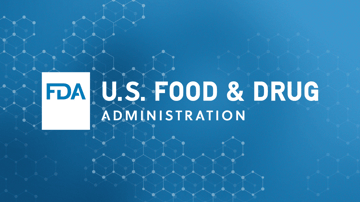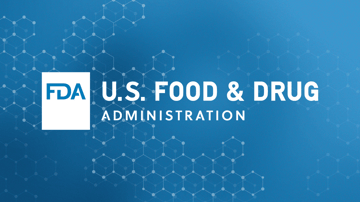Editor's note December 2022: The FDA has released the final rule for FSMA Section 204, published in November 2022, with a mandatory compliance date of January 20, 2026, for all businesses that handle food on the FDA's Food Traceability List. Read our blog The Roadmap to Enhanced Traceability Recordkeeping to learn the latest.
September 2020: The FDA has formally released the proposed traceability rule for FSMA section 204. Learn how the drafted legislation may apply to your own food safety, data and product tracing programs.
On September 21, 2020 the FDA released a long-awaited proposed rule to achieve farm-to-table traceability in the food system. The drafted legislation falls under section 204 of the landmark Food Safety Modernization Act (FSMA) of 2011, and signals a major milestone for the agency’s New Era of Smarter Food Safety initiative to accelerate transparency and consumer protection innovation within the food industry. Learn what requirements your business may become liable to, the proposed timing of compliance dates and how to take the first steps to ensure your team is prepared to evolve with more advanced industry requirements. The full 55 page document will be available until January 21, 2021 for public comments and recommendations.
What is FSMA Section 204?
“Congress recognized the need for greater traceability in the FDA Food Safety Modernization Act (FSMA),” FDA Deputy Commissioner for Food Policy and Response Frank Yiannas stated in the recent announcement of the new proposed rule. In the decade following the ratification of FSMA, numerous programs have been developed to ensure more rigorous food safety standards are being met throughout the industry in accordance with compliance dates set by the federal government. The 2011 legislation mandates that additional requirements for food traceability and record keeping are developed by the FDA to “help establish clear tracing of a food product’s source when needed to address food safety risks.” FSMA section 204, which covers recordkeeping and the enhanced tracking and tracing of food products, is the rule that will be defining and enacting these additional requirements.
The new rule will push the industry beyond “one-up, one-back” traceability, and is heavily informed by the New Era of Smarter Food Safety initiative, where tech-enabled traceability is a “core element.” Yiannas indicated that the new rule is a preliminary step for the New Era initiative, saying, “When FDA Commissioner Stephen Hahn and I announced the New Era of Smarter Food Safety Blueprint in July, this proposed rule was presented as the first step in our work to advance traceability.”
Promoting the Benefits of Traceability
As the FDA works to incentivize the adoption of modern, smarter tools, traceability will play an important role in realizing a key goal for the agency - revolutionizing food safety and prevention. Through data normalization and harmonization around Critical Tracking Events and Key Data Elements, the industry can begin building greater visibility into the food system, revealing vulnerabilities and exposing root causes associated with outbreaks faster and more accurately. “Consumers don’t normally think of food traceability as being a means of preventing foodborne illness, but like many of the improvements in food safety over the years, such as whole genome sequencing, what we are proposing today has a direct impact on preventing foodborne illness,” said Yiannas.
While consumer protections remain at the heart of the FDA’s work on traceability, regulators are also working to highlight the broader benefits of food transparency for all stakeholders. In addition to preventing serious illness or death, a transparent food system allows for more targeted, low-impact approaches to solving food safety issues. Yiannas explained, “The availability of the traceability records that are set out in the proposed rule would also help limit the scope of recalls and in some instances, allow the FDA to better target consumer advice, avoiding blanket alerts on whole commodity sectors.”
What are the FDA's Traceability Requirements?
The proposed rule set forth in FSMA section 204 will govern food traceability requirements. The drafted rule is not yet in effect and may change after the submission of public comments. However, the drafted recordkeeping requirements are a strong indication of what food businesses should prepare for. Including which products will likely be impacted, what and when data elements will need to be captured, stored or shared, FDA access to records, as well as what exemptions may apply.
The Food Traceability List
New requirements set forth by FSMA section 204 will apply to designated “high-risk foods” named in the Food Traceability List (FTL). Food products named on this list, as well as food products containing ingredients named on the list, are subject to enhanced traceability requirements unless explicitly exempted. The proposed list includes:
- Cheeses, other than hard cheeses
- Shell eggs
- Nut butter
- Cucumbers
- Herbs (fresh)
- Leafy greens, including fresh-cut leafy greens
- Melons
- Peppers
- Sprouts
- Tomatoes
- Tropical tree fruits
- Fruits and vegetables (fresh-cut)
- Finfish, including smoked finfish; except does not include Siluriformes fish, such as catfish
- Crustaceans: Includes all crustacean species, such as shrimp, crab, lobster, and crayfish
- Mollusks, bivalves
- Ready-to-eat deli salads
Critical Tracking Events and Key Data Elements
Critical Tracking Events (CTEs) define the events where information must be captured throughout the product journey of foods listed on the FTL. Further specifications for the types of information that must be captured follow for each type of event, with some exceptions or enhancements for specific food products. The pieces of information required for each CTE are called Key Data Elements (KDEs), and may include data elements such as time, location, lot code, quantities or other units, business identification information and more.
The proposed rule identifies the following CTEs for which records containing KDEs would be required:
- Growing: For many food products on the FTL, such as fruits and vegetables, growing will be the first supply chain event where information must be captured.
- Receiving: This CTE describes the event in which an entity purchases a food product and receives it at a specific location after transportation. There are specific KDE requirements for “first receivers,” who are the initial recipient of foods that are “originated.” For more information and examples of when the first receiver category applies, see the First Receiver factsheet (PDF).
- Creating: This event involves the creation of a food product governed by the FTL via processing or manufacturing. For additional information, see Creation and Transformation (PDF).
- Transforming: Transformation events involve the changing of food on the FTL, its package, and/or its label. This does not include changes made during creation. For additional information, see Creation and Transformation (PDF).
- Shipping: These events involve the preparation and arrangement of product transport from one entity or location to a different farm or receiver.
Businesses handling foods on the FTL will need to capture and store KDEs during any instance of the above CTEs. View which KDEs may apply to you for each of the named CTEs here.
Additional Requirements, Modified Requirements and Exemptions
In addition to defining the types of events and data elements that require records creation, the new proposed rule dictates methods for record-keeping and broader records requirements. To this end, FSMA section 204 requires those who manufacture, process, pack or hold FTL foods to maintain traceability program records, covering:
- A description of relevant reference records
- A list of foods on the FTL that are shipped
- A description of how traceability lot codes are assigned
- Other information needed to understand data provided within the required records
These additional records requirements enable third parties to navigate and understand traceability data collected during CTEs. The rule also states that the records must be properly stored and rendered to ensure readability and prevent deterioration or loss.
While the proposed rule does not mandate the use of electronic records (original paper records or true copies are allowed), the FDA will require records be available within 24 hours of a request. Furthermore, they must be rendered in an electronic sortable spreadsheet in cases where the request stems from needing assistance in an outbreak, recall or other public health crisis. Businesses will likely need to keep electronic traceability program records in order to fulfill these requests in the proposed timeframes.
Some products or persons will be exempt from a number of the proposed traceability requirements. Exemptions may apply to you if your operation is below a certain production or profit threshold, if your products are sold directly to consumers at venues such as farmer's markets, if certain processing procedures take place that reduces foodborne illness risks, or if the end-product is rarely consumed raw. These proposed exemptions and other partial requirements are highly specific and can be further reviewed here.
Section 204 Compliance Dates
The proposal states that once the final rule is published in the Federal Register, the agency would like to implement a 60-day waiting period before the enhanced traceability requirements will officially apply to the Food Traceability List.
Once the rule is in effect, the agency will set the compliance date for new traceability recordkeeping requirements to 2 years after the effective date of the final regulation. As keeping proper records will require the participation of multiple supply chain stakeholders, all impacted by the new regulation will share the same compliance date.
Once the compliance dates are in effect, businesses will likely need to be prepared to have an electronic sortable spreadsheet containing traceability program data within 24 hours of any potential FDA request. For many, this means preparing as soon as possible to digitize supply chain data and improve data records keeping practices.
Implementing Traceability
While the FDA’s proposed timelines are reasonable for food businesses still in the infancy of their traceability journey, the process can be long and involved to move from antiquated systems to a digital, comprehensive traceability program. However, once implemented, supply chain digitization and product tracking can have incredible business impacts, such as delivering on a brand promise to provide safe, incredible food to consumers. Tech-enabled traceability will allow food businesses to participate in the modern food system.
Learn how FoodLogiQ customers are preparing for the proposed traceability rule. Reach out to the FoodLogiQ team if you are interested in learning more about traceability software, or download one of our traceability resources for more information.



